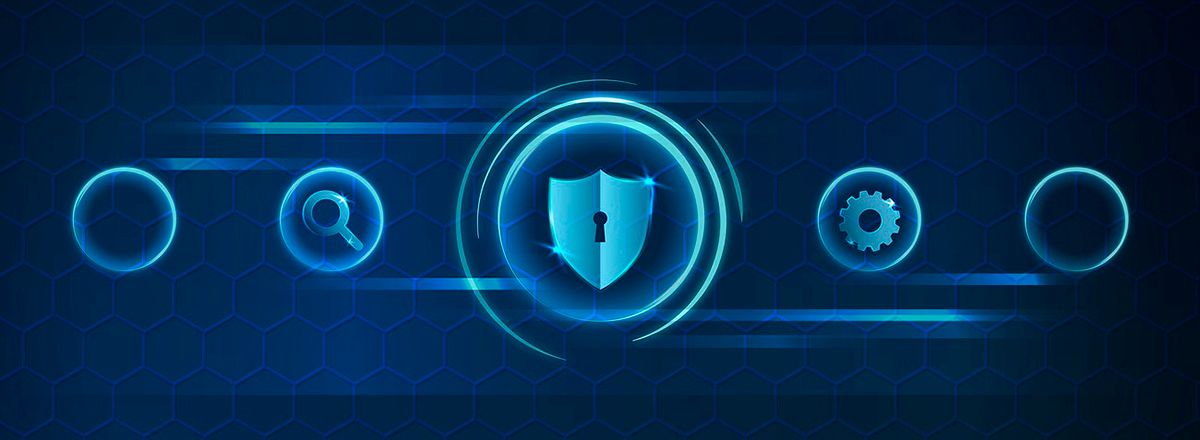The number of cybercrimes worldwide has increased drastically for the last five years. The transition to remote formats of work and the trend of digitalization creates the conditions for an increase in the number of such crimes, and cyber risk management has become a tool for business survival.
And while many companies make some efforts to protect their data and systems, they are often unprepared for cyberattacks.
In some cases, the cybersecurity strategy is to purchase a large amount of software and hardware. But without a comprehensive approach, these tools become virtually useless, create a false sense of security, and thus only increase the likelihood that a hacker attack will go unnoticed.
Imaginary security. Typical business mistakes
1 The cybersecurity function is not represented at the top management level
In many companies, either the IT director or the head of economic security is responsible for this area. They may be the right professionals, but they lack the strategic vision and knowledge to understand the business implications of compromising specific systems.
Consequently, they cannot defend the necessary cybersecurity decisions and effectively protect their board's relevant plans.
2 Lack of integration of cybersecurity function with other services
First of all, with IT and internal audit service. In this case, the department responsible for cybersecurity must report the threats, but it cannot effectively protect the business due to the fragmentation of the entire management system.
3 Insufficient number of competent staff
Two or three employees mainly represent the cybersecurity sector in companies, and sometimes by one person.
It is not enough to perform all the functions, especially if it is a large company or bank.
Risk shield. How to create it?
The company's main task in cybersecurity is not so much in the specific overcoming of already identified threats as in the readiness for such incidents in principle.
In this case, even after falling victim to a cyberattack, businesses will be able to maintain their reputation, customers, and their position in the market.
For example, one of the largest hotel network operators, Marriott International, in 2014-2020 faced a series of thefts of customer data, passports, and credit cards. But thanks to the proper response of those responsible, customers continued to stay in these hotels even despite this risk.
We call the ability to repel cyber threats cyber resilience effectively. It takes into account four stages:
• Prevention (for example, complex passwords, two-factor authentication, etc.).
• Preparation (availability of a clear plan for overcoming the crisis and minimizing risks).
• Response (reaction, implementation of the action plan for the incident) and recovery (return of the enterprise).
An adaptive cybersecurity model must also be added to these stages: not a static action plan, but continuously updated according to new risks and threats that need to be monitored.
To test your business's readiness for possible cyber threats, try answering a few simple questions:
Do we recognize a persistent security deficit?
Today, it is virtually impossible to provide 100% protection against cyber threats. In the corporate world, security is always a fine line between maintaining a high security level and the need to please some units that may resist specific procedures.
How much do we trust our digital authentication?
A balance between security and user-friendliness helps maintain trust and retain customers. Today, companies are increasingly using so-called "fusion" centers or a modern version of information security centers.
They are based on the analysis and processing of vast arrays of data to prevent incidents and respond quickly to them while reducing unproductive costs.
To what extent does our team monitor changes in the security sector in our industry?
You need to continually research existing technologies and make changes to your cybersecurity plan.
How do we test our cybersecurity?
In other words, do we conduct simulation tests to test our line of defense and determine if there are risks of non-compliance with regulatory requirements?
How actively are we implementing automation and cloud technologies?
The better all processes are structured, the less risk there is of being at risk of cybercrime.
Previously, the main task of security services was to protect the production cycle as the basis of a business. Now the mission is to be ready for anything.
It is a more holistic and service-oriented approach, focusing on the business's central "pillar," ensuring the continuity of services.
Ultimately, this is the transition from focusing on individual processes to managing the whole enterprise's sustainability.


